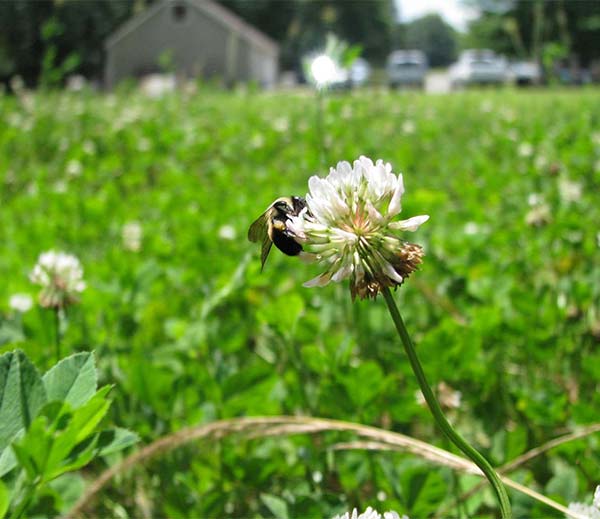
What are White Clovers?
White clovers (Trifolium repens) are commonly found in pastures across Australia, with main growth in the Spring, Summer, and Autumn seasons. While they are considered beautiful and many homeowners value them, they are also considered a weed and can cause some issues for who experience them in their yards.
Disadvantages of having white clovers on your lawn:
- Aesthetic Concerns: Giving your lawn patchy appearance.
- Potential Allergies: Can trigger allergies to people sensitive to pollen.
- High Bee Activity: This can be considered as a benefit but can be a concern if you have allergies of bees or have young children who play in the yard.
- Difficulty in Eradication: Once established, white clover can be persistent and difficult to fully eradicate from a lawn without taking specific measures.
- Potential for Smothering Grass: In some cases, if white clover becomes dominant, it can smother or suppress the growth of grass, leading to a less healthy and vibrant lawn.
- Tolerates Low Mowing: White clover tends to tolerate lower mowing heights better than some grass species, which can lead to unevenness in the lawn if you desire a uniform height.
 If you are aiming to improve your lawns overall aesthetic look, keep reading for tips on taking control of your clover problem.
If you are aiming to improve your lawns overall aesthetic look, keep reading for tips on taking control of your clover problem.
Tips on how to maintain white clover in your lawns:
- Mowing Height: Maintain a higher mowing height to encourage grass growth and help shade out clover. Mowing too short can give clover a competitive advantage.
- Selective Herbicides: If you want to reduce the abundance of white clover without completely eradicating it, you can use selective herbicides designed to target broadleaf weeds like clover.
- Monitor for Overgrowth: Regularly inspect your lawn for signs of excessive clover growth. If clover starts to dominate, you may need to adjust your lawn care practices to promote healthier grass growth.
- Competition for Grass: Encourage grass to outcompete clover by following proper lawn care practices, such as regular fertilization, appropriate watering, and maintaining optimal soil conditions.
- Limit Flowering: Mow your lawn before clover flowers to prevent seed production. This can help limit the spread of clover.
- Thatch Control: Prevent excessive thatch build-up, as clover can contribute to thatch accumulation. Regular aeration and dethatching can help keep thatch in check.
- Regular Maintenance: Continue with a regular lawn maintenance routine, including mowing, watering, and fertilization, to keep your lawn healthy and well-balanced.
- Balance with Grass: Aim for a healthy balance between clover and grass. Too much clover can create an uneven appearance and potentially impact the overall health of your lawn.
Remember that white clover can provide certain benefits, such as nitrogen fixation, soil improvement, and pollinator attraction. However, it’s important to strike a balance between these benefits and the potential downsides in terms of lawn aesthetics and competition with grass. Regular observation, thoughtful management, and adapting your lawn care practices as needed can help you successfully maintain white clover in your lawn.

